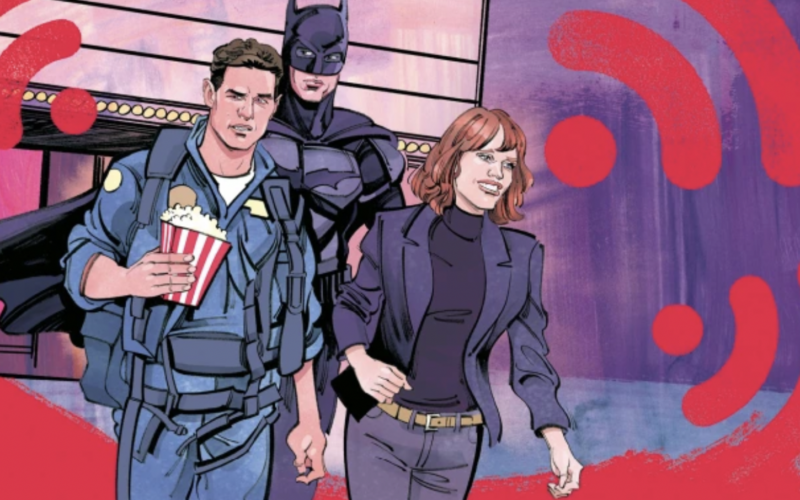BY PAMELA MCCLINTOCK | HollywoodReporter.Com
Troy Warren for CNT #Entertainment #EditorsPicks
Amid a growing gulf between haves (anything Marvel) and have-nots (‘West Side Story’), distribution chiefs are making difficult calls on which titles to send to streaming as early as 45 days after a theatrical run begins.
When Steven Spielberg’s West Side Story opened to a dismal $10.6 million at the domestic box office over the Dec. 10-12 weekend, Hollywood was despondent. The next question: How quickly will the musical go to streaming if it doesn’t rebound in theaters?
West Side Story is hardly the only film caught in the crosshairs of a dramatically altered landscape that has seen the theatrical marketplace become a shell of itself because of the pandemic, at least for anything that isn’t a superhero movie or a film like Free Guy that can rally younger male moviegoers in the 18-to-34 age group. Every studio is now having to figure out how early to send a movie to a streaming service to boost subscribers or to premium VOD.
Before the pandemic, theater owners could demand a 74- to 90-day exclusive theatrical window. No more. As the country emerges from the pandemic, the window being adopted by many in Hollywood is 45 days. Moreover, there’s nothing to stop a studio from abandoning ship and sending a title to the home earlier depending upon its performance (in fact, Paramount sent Snake Eyes to PVOD at day 21 after it bombed this summer); conversely, a big tentpole film could stay in theaters exclusively past 45 days if it is doing well.
“The 45-day theatrical window seems to strike the perfect balance between the prestige and exclusivity that only a theatrical-first model can provide while acknowledging that most films make the lion’s share of box-office in the first few weeks of release,” says Paul Dergarabedian of Comscore.
“There is no cookie-cutter approach anymore,” opines one studio exec. “I personally believe in the theatrical window, and there are movies that should be day-and-date. Windowing is getting very tricky.”
One by one, studios have announced that they could send most of their 2022 films to their sister streaming services as early as 45 days, although Disney is staying mum on an official basis. Warner Bros.’ The Batman, unspooling March 4, could benefit from not debuting day-and-date in theaters and on HBO Max, like the studios’ 2021 releases. And Universal made it clear the new streaming plan won’t apply to next summer’s tentpoles Jurassic World: Dominion and Minions: The Rise of Gru.
Many of the films going to Peacock around the 45-day mark are adults-skewing action pics — including the Jessica Chastain-starring ensemble pic The 355 — and adult dramas, underscoring the precarious future facing any movie that isn’t a superhero pic or a mega-franchise installment. Spider-Man: No Way Home (Dec. 17) could open north of $130 million, as an example. “We should just rename all theaters Marvel,” quips another studio executive.
Throughout the various stages of the pandemic, study after study has found that moviegoers over the age of 35, and especially older females, have been the most reluctant to return to theaters. House of Gucci, now in theaters, is among a handful of adult-skewing titles that has done relatively well at the box office after drawing younger consumers as well (the Ridley Scott pic stars Lady Gaga). The film posted a five-day Thanksgiving debut of $22 million, including $14 million for the three day weekend. West Side Story had hoped to match that three-day number, but played notably older, with 26 percent of ticket buyers over age 55.
Insiders say there are talks taking place regarding when to send West Side Story to the home. One reason to keep it only in theaters beyond 45 days is Oscar nominations, which will be announced Feb. 8 (more imminently, the film also is hoping for a Christmas bump). Another reason is Spielberg himself; he is a fierce champion of the theatrical experience. However, sources say he has indeed come around to the idea that the old window is likely shut forever and that West Side Story will be in the home far earlier than any of his previous films.
West Side Story is from 20th Century, which sends its movies to HBO Max even though it is now owned by Disney. But under a new arrangement, 20th Century titles can now also debut on Disney+ or Hulu. West Side Story is expected to be among those films that do, raising its visibility from a streaming perspective.
When announcing this year that it would be sending many of its films to Paramount+ as early as 45 days, the studio did include the next Mission: Impossible in that group but not Top Gun: Maverick. Both films star Tom Cruise, who, like Spielberg, is a fierce theatrical champion and could have been exacting some concessions. Says another source, “Sometimes, it’s still all about talent.”
Based on next year’s lineup, as well as how strong Spider-Man: No Way Home is looking, London-based analytics firm Gower Street released its estimates for the 2022 box office on Thursday.
Worldwide ticket sales are projected to hit $33.2 billion, a huge 58 percent spike over this year’s estimated $21 billion. Gower says the film industry will likely have to wait until 2023 to see revenue reach pre-pandemic levels of $40 billion-plus.
North America should see the most notable gain, and reclaim its spot as the No. 1 moviegoing market in the world (China ranked No. 1 last year and this year).
In Other NEWS




































